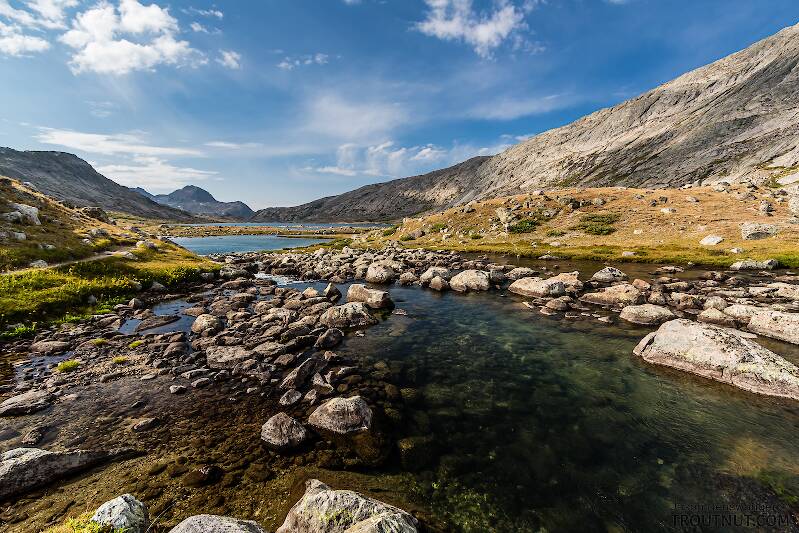
Salmonflies
Pteronarcys californica
The giant Salmonflies of the Western mountains are legendary for their proclivity to elicit consistent dry-fly action and ferocious strikes.

— 4 small yellow spots on frons visible in photos
— Narrow occipital spinule row curves forward (but doesn’t quite meet on stem of ecdysial suture, as it's supposed to in this species)
— Short spinules on anterior margin of front legs
— Short rposterior row of blunt spinules on abdominal tergae, rather than elongated spinules dorsally
I caught several of these mature nymphs in the fishless, tiny headwaters of a creek high in the Wenatchee Mountains.

Mayfly Species Rhithrogena fasciata
Species Range
Physical description
Most physical descriptions on Troutnut are direct or slightly edited quotes from the original scientific sources describing or updating the species, although there may be errors in copying them to this website. Such descriptions aren't always definitive, because species often turn out to be more variable than the original describers observed. In some cases, only a single specimen was described! However, they are useful starting points.
Male Spinner
Wing length: 6 mm
A rather small pale species, allied in type of genitalia to Rhithrogena anomala.
Head pale yellow; clypeus colorless, hyaline; small black spot at base of antenna; small black spot on each side beneath clypeus. Purplish area around base of antenna, which is whitish; base of filament smoky, tip white. Pronotum deeply emarginate posteriorly; yellowish orange. Mesonotum pale yellow, brown on each side of scutellum. Metanotum brown. Pleura pale with ochreous markings. Venter pale ochreous; posterior portion of mesosternum tinged with brown. Legs yellowish brown, femora deeper brown; round purplish spot at center of each femur. All joinings narrowly dark purplish. Wings semi-hyaline; longitudinal veins yellowish to yellow-brown, cross veins colorless. Abdominal segments smoky, some with ochreous tinge. Segments 1 and 2 pale, very faintly smoky; 3-6 deeper smoky, with distinct lavender tinge; 7-10 tinged with pale ochreous. Posterior margins of all tergites dull pale lavender, so that abdomen appears banded. Indistinct pale submedian dashes and pale median line on tergites 2-7. Sternites pale, immaculate; no dark banding. Genitalia pale brown; penes quite similar in form to R. anomala (see fig. 102). Tails whitish, not darker at joinings.
Start a Discussion of Rhithrogena fasciata
References
- Needham, James G., Jay R. Traver, and Yin-Chi Hsu. 1935. The Biology of Mayflies. Comstock Publishing Company, Inc.
Mayfly Species Rhithrogena fasciata
Species Range
Resources
- NatureServe
- Integrated Taxonomic Information System
- Global Biodiversity Information Facility
- Described by Traver (1933)

